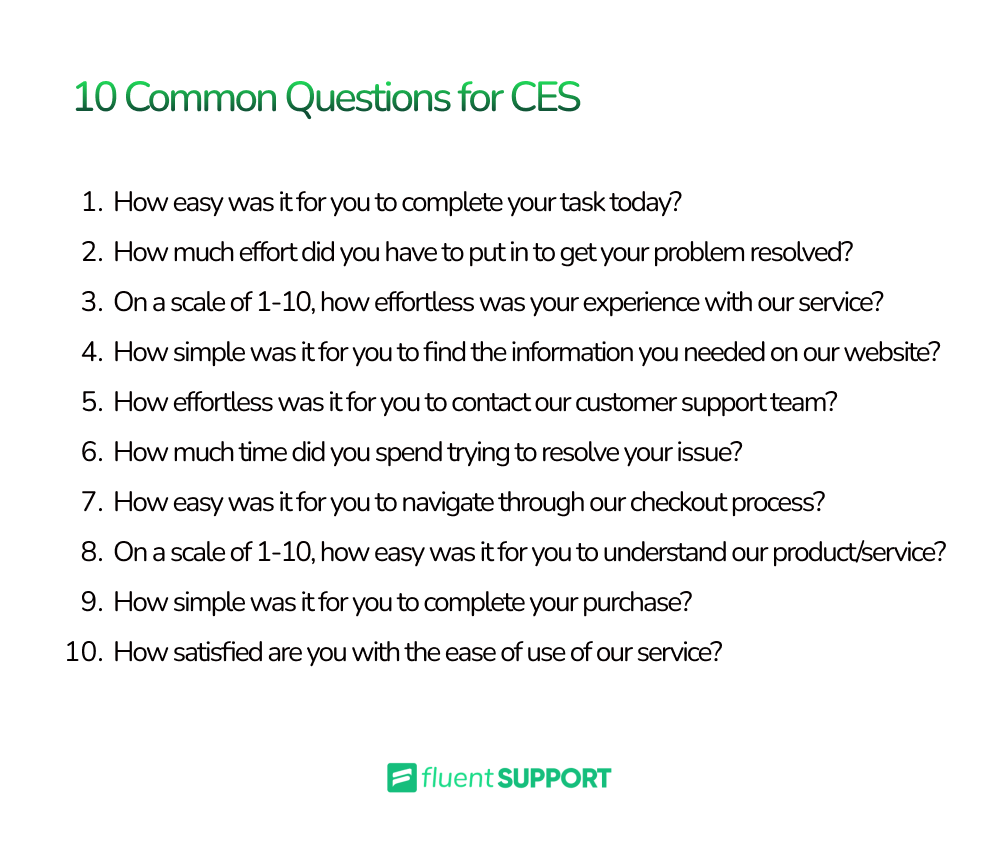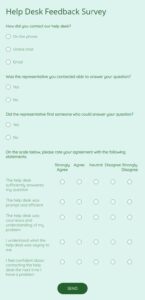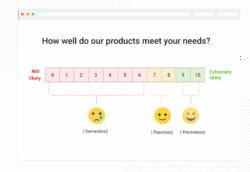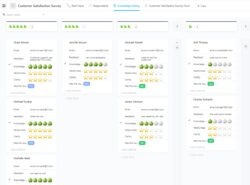Understanding how easy or difficult it is for your customers to interact with your business is paramount for fostering loyalty and ensuring their satisfaction. We’ve all been there: trying to resolve an issue, complete a purchase, or find information, and it feels like an uphill battle. This high level of friction can quickly sour a customer’s experience, regardless of the product or service itself. That’s where the Customer Effort Score (CES) comes into play, offering a straightforward yet powerful metric to gauge the ease of interaction.

By focusing on reducing customer effort, businesses can significantly improve their service delivery, streamline processes, and ultimately build stronger, more lasting relationships. A well-designed customer effort score survey template is your secret weapon in uncovering these critical areas of friction, allowing you to identify pain points and implement targeted solutions that truly matter to your customers. It’s about making their journey with you as smooth and effortless as possible.
What is Customer Effort Score (CES) and Why Does It Matter?
The Customer Effort Score, or CES, is a single-item metric that asks customers to rate the ease of their experience with a specific interaction, product, or service. Typically, respondents are asked to agree or disagree with a statement like “The company made it easy for me to handle my issue” on a scale, often ranging from 1 (strongly disagree) to 7 (strongly agree), or sometimes 1 (very difficult) to 5 (very easy). The core idea behind CES is simple yet profound: customers are more loyal to companies that make things easy for them.
While customer satisfaction (CSAT) and Net Promoter Score (NPS) are valuable metrics, CES offers a unique lens, specifically pinpointing friction points in the customer journey. A low effort score indicates a positive experience, leading to higher customer retention, repeat business, and positive word-of-mouth referrals. Conversely, high effort scores signal areas where customers are struggling, which can lead to frustration, churn, and negative feedback. Addressing these high-effort touchpoints can have a dramatic impact on overall customer experience.
CES is particularly effective when measured immediately after a specific interaction, such as a support call, a product return, an online purchase, or an onboarding process. This allows for direct feedback on a recent experience, making the data highly actionable. For example, if customers consistently report high effort in navigating your returns policy, it flags an immediate area for process improvement.
The insights gained from CES are not just about fixing problems; they are about proactively optimizing the entire customer journey. By systematically measuring and improving CES, you can enhance operational efficiency, reduce the volume of customer complaints, and create a more pleasant and frictionless experience for everyone who engages with your brand. It’s a direct pathway to happier customers and a healthier business.
Key Benefits of Measuring CES
* Identifies specific pain points and friction in the customer journey.
* Directly correlates with customer loyalty and reduces churn.
* Provides actionable insights for service and process improvements.
* Offers a clear, quantifiable metric for tracking improvement over time.
* Contributes to a more positive overall customer experience.
Building Your Effective Customer Effort Score Survey Template
Crafting an effective customer effort score survey template begins with the core question that defines CES itself. The most common and widely recognized question format is: “To what extent do you agree or disagree with the following statement: [Company Name] made it easy for me to handle my issue.” or “How easy was it for you to resolve your issue today?” followed by a numerical scale. This single question provides the quantitative data you need to calculate your overall CES, which is typically derived by averaging the scores or calculating the percentage of “easy” responses.
However, a single quantitative score, while useful, doesn’t tell the whole story. To truly understand *why* a customer gave a particular score, it’s crucial to include follow-up qualitative questions. These open-ended questions allow customers to elaborate on their experience, providing rich, contextual data that illuminates the root causes of high or low effort. For instance, after the CES question, you might ask, “What made your experience easy or difficult?” or “Do you have any suggestions on how we could improve your experience?” This feedback is gold for identifying specific bottlenecks and areas for improvement.
Timing and distribution are also key elements of your customer effort score survey template strategy. For optimal results, send the survey immediately after a specific interaction has occurred. This could be after a customer service call, following a successful purchase completion, or after a new user finishes the onboarding process. Immediate feedback ensures the experience is fresh in the customer’s mind, leading to more accurate and detailed responses.
Finally, keep your customer effort score survey template concise and to the point. Customers are busy, and lengthy surveys can lead to survey fatigue and lower response rates. A short, focused survey respects their time and encourages higher participation. The goal is to gather vital information efficiently, allowing you to quickly identify and act on opportunities to reduce customer effort and improve their journey with your business.
* Core CES Question
* Follow-Up Qualitative Questions
* Targeted Distribution
* Brevity and Clarity
Implementing a robust Customer Effort Score strategy is a powerful way to put your customers at the heart of your operations. By consistently seeking to understand and minimize the effort they expend, you build a foundation of trust and reliability that resonates deeply with them. It’s about recognizing that every interaction, no matter how small, contributes to their overall perception of your brand.
Focusing on ease and simplicity is a direct path to cultivating loyalty and advocacy. When customers find it effortless to do business with you, they are more likely to return, recommend you to others, and remain loyal over the long term. This proactive approach to customer experience management isn’t just good for customer satisfaction; it’s a vital ingredient for sustainable business growth and success.



